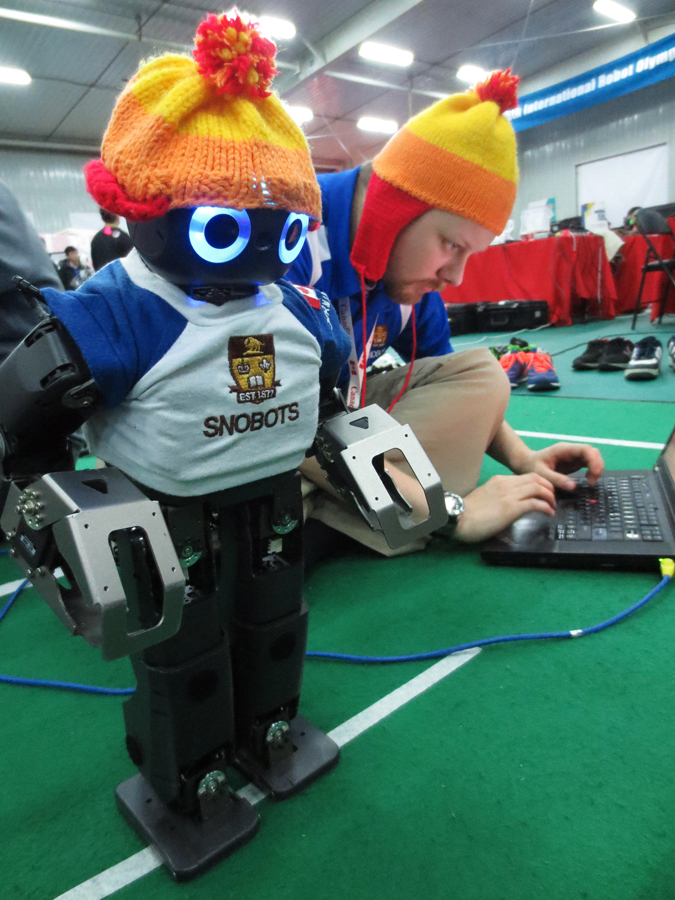The abundance of decorations, promotions and candy seemed to indicate that there was a celebration or festival going on in the last week of October. In a possibly related incident, on Sunday evening my house was visited by costumed vagrants looking for handouts. In an effort to appease the loiterers I handed out the only things I saw fit: network cables, RJ45 jacks and cable crimpers. The generous offer was met with looks of disappointment. Apparently they were not celebrating the Oct. 29, 1969 launch of ARPANET (Advanced Research Projects Agency Network) or the recent announcement of China’s record-breaking supercomputer.
Forty-one years ago, the letters “lo” were sent from University of California in Los Angeles (UCLA) to the Stanford Research Institute. The rest of the bits didn’t make the 400-mile journey, as the system promptly crashed. The word which researchers attempted to send was “login,” and the network was the foundation of digital communication.
ARPANET, the great granddaddy of the Internet, was the first network to use packets — standardized chunks of data — to send information, creating a transmission system so widespread it’s almost a human universal.
What was once a milestone of technology seems almost a laughable achievement when compared to the power of China’s new supercomputer. According to the New York Times, the Tianhe-1 is 1.4 times more powerful than the previous record holder, the “Jaguar,” a Cray XT5 supercomputer. No easy feat when the Jaguar boasted 2.33 petaflops or “over two thousand trillion calculations per second” according to its keepers in the Oak Ridge Leadership Computing Facility.
Although it resides in China, the Tianhe-1 is powered by Western technology. Intel provided the central processing units (CPU), and Nvidia supplied the graphics processing units (GPU). In a novel approach, the Chinese computer splits the processing load between 14,000 CPUs and 7,168 GPUs. This setup requires 50 per cent of the floor space and a few thousand fewer CPUs than a traditional supercomputer would use. Fewer processors translate to a larger power savings. The Tianhe-1 needs only 4.04 megawatts — a traditional setup would require more than 12!
Modern supercomputers are built of multiple smaller computers working in unison, in an approach called “parallel computing.” Instead of sending an instruction (a mathematical problem) to the processor piece by piece as your desktop does, parallel computing takes the problem and breaks it down into a series of instructions. Each “piece” is sent over a network to a separate computer, and further broken down into simpler instructions. This allows the computer to solve the steps in “parallel,” in a fraction of the time it would take a single-processor computer.
What separates China’s computer from the previous record holders is the speed at which the network functions. Tianhe-1 uses a networking system that Chinese researchers developed, capable of handling data “at about twice the speed of a common interconnect called ‘InfiniBand,’” says the New York Times. Infiniband is a system developed by Intel for use in large computing systems and has been the traditionally accepted model for distributed and parallel computing.
The development of their own networking system highlights China’s dedication to their computing projects.
The supercomputer will allow Chinese researchers to gain an advantage in countless scientific fields, as well as attract talent from around the globe. With plans to build proprietary chips, the Tianhe-1 is probably the first in what will be a series of Chinese computing advancements.
This is hardly a surprise to anyone who’s been following China’s infrastructure programs. Although owned by a nation, the benefits will be global. The computer will help push the limits of scientific knowledge in countless fields and provide more accurate models for a variety of systems.
I’m not sure about you, but I know what I’m going to be celebrating come next October.



